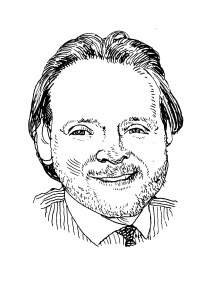Explaining The March Jobs Report: The Good, The Bad and The (Not So) Ugly
By Jotham Sederstrom April 10, 2012 4:00 pm
reprintsEmployment is the metric that has the most profound impact on the underlying fundamentals of commercial real estate.
When jobs are created, office space gets filled, people rent or purchase apartments, people spend more money in retail stores, industrial production increases to meet that end-user demand for products, and people are more likely to travel, which helps occupancy rates in hotels.
Last Friday’s jobs report was well below the consensus expectations presented by economists. Projections were that 205,000 nonfarm jobs would be created in March and the number came in at 120,000. Before looking at this number and recent employment trends more closely, let’s take a broader look at the jobs picture.

Unemployment statistics are calculated from the Household Survey, which indicates that employment peaked in November of 2007 at approximately 146.6 million jobs. The Survey also shows that employment hit a low point in December 2009 at 137.97 million jobs, a drop of about 8.63 million jobs during the recession. Since then, nearly half of the lost jobs have been regained, or over 4.2 million. This relative number of jobs regained is important because it impacts occupancy levels, particularly in office buildings. It is important to note that job gains in the four months from December through March totaled nearly 860,000, the best such period since 2006 with the exception of the hiring of census workers in 2010.
Notwithstanding this four-month performance, this relative level of job growth represents only about half of the gains that even the most pessimistic forecasters predicted we would attain when the recovery began. Generally, when recessions are severe, recoveries tend to be more robust, acting like the proverbial rubber band that snaps back stronger the more it is pulled. Unfortunately, this has not occurred, making this recovery the weakest out of the past 10 recessions since the Depression. This is both in terms of GDP growth and job creation. Neither of these facts is helpful to commercial real estate fundamentals.
March’s 120,000 job gain total has been widely reported and much of the coverage has been on the negative side. The report, many say, has created fears that the recovery is slowing yet again, failing to gain the all-important consistent traction that is needed. I don’t think it is appropriate to place too much emphasis on just one monthly report as there are always bumps along the way. There are, however, a number of points about the report that I believe are important to make.
Weakness in the jobs numbers was observed in the spring of 2010 and 2011 as well. A few economists have indicated that job creation may have been “overstated” in January and February as a mild winter may have accelerated hiring that may have otherwise taken place in the early spring, zapping the March numbers. This theory does not explain the weakness in the jobs numbers in the spring of 2010 and, especially, in the spring of 2011 following a winter that was very harsh.
We also must be cognizant of the seasonal adjustments that are incorporated into the numbers through which the government guesses at what the private sector is up to.
These adjustments tend to overstate growth early in the year only to have downward revisions correct the guesswork later on.
Additionally, nearly 70 percent of all jobs created over the past six months have been in lower paying sectors of the economy, which explains why GDP growth has not been more robust than our pace of job creation would dictate.
As you have probably noticed, I rarely quote the unemployment rate as there is so much manipulation of that number; it really doesn’t tell us much. There have been months in which we have had negative job growth and the unemployment rate has dropped and vice-versa. This is due to the way in which underemployed Americans are accounted for. If someone is working part-time and would prefer full-time employment, they are not counted as unemployed. Similarly, if a discouraged worker stops looking for a job for four weeks, they are no longer counted as unemployed either. This “participation rate,” or the number of Americans who are in the workforce or are looking for work, can fall (as it did in March by about 164,000), causing the unemployment rate to drop even when no one is hired. Therefore, the unemployment rate can tumble simply because people are so pessimistic about their prospects that they simply give up their search.
The foregoing supports the fact that the absolute level of private sector jobs created remains the most important factor to focus on to get a sense of where our commercial real estate market is heading. Let’s hope those numbers continue to improve.
rknakal@masseyknakal.com
Robert Knakal is the chairman and founding partner of Massey Knakal Realty Services and in his career has brokered the sale of more than 1,200 properties, having a market value in excess of $8 billion.



